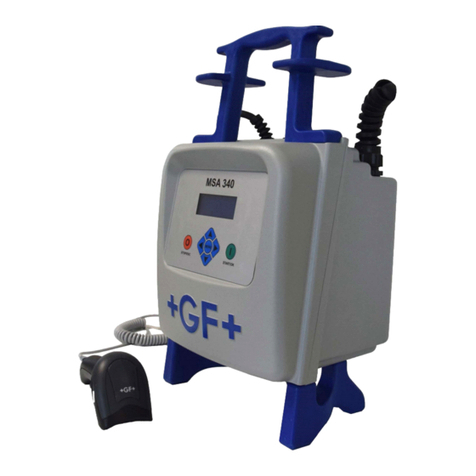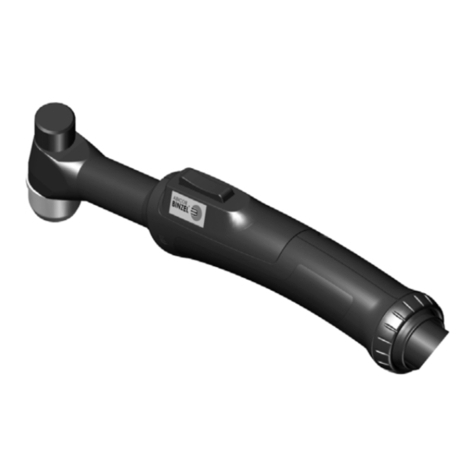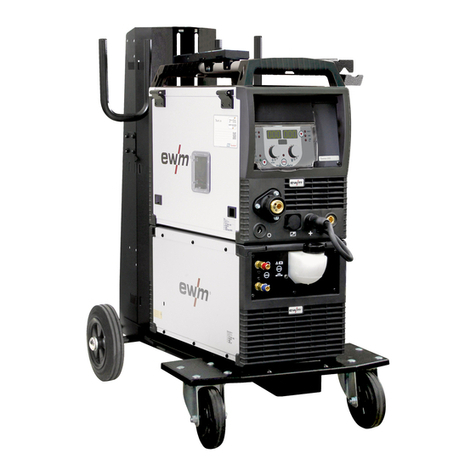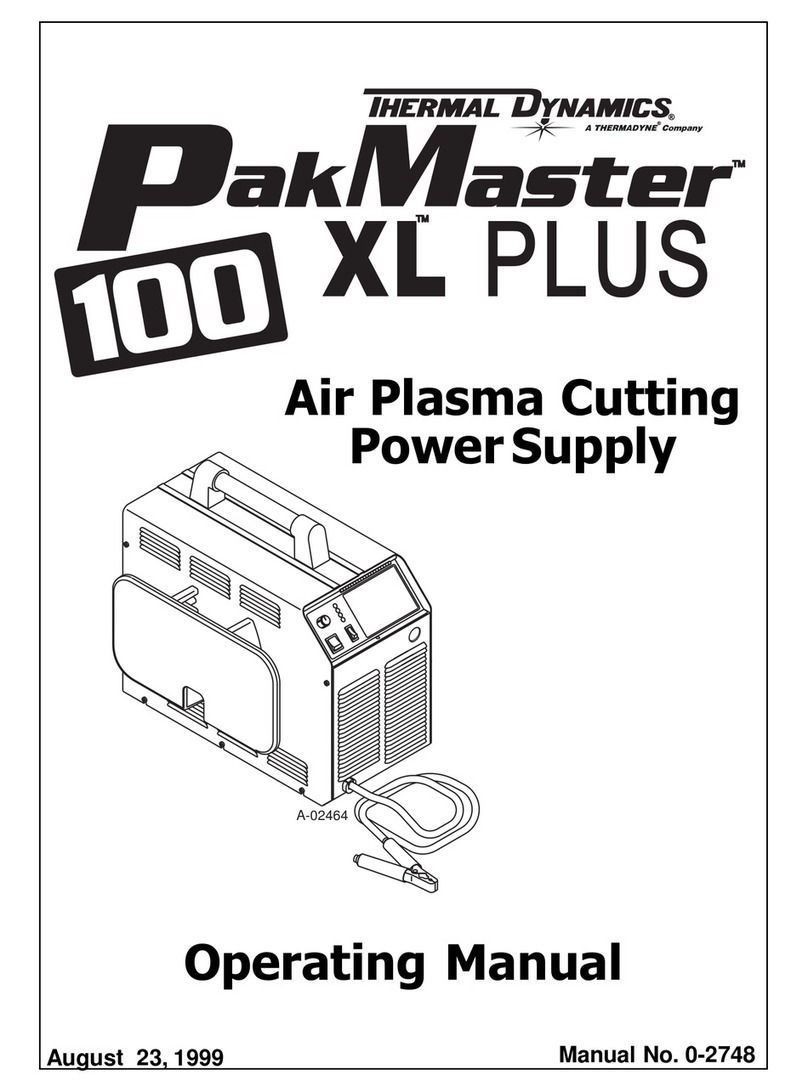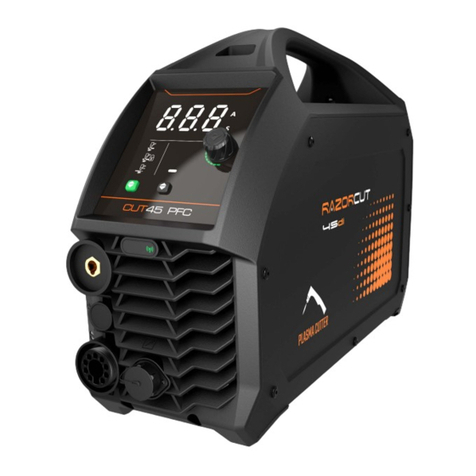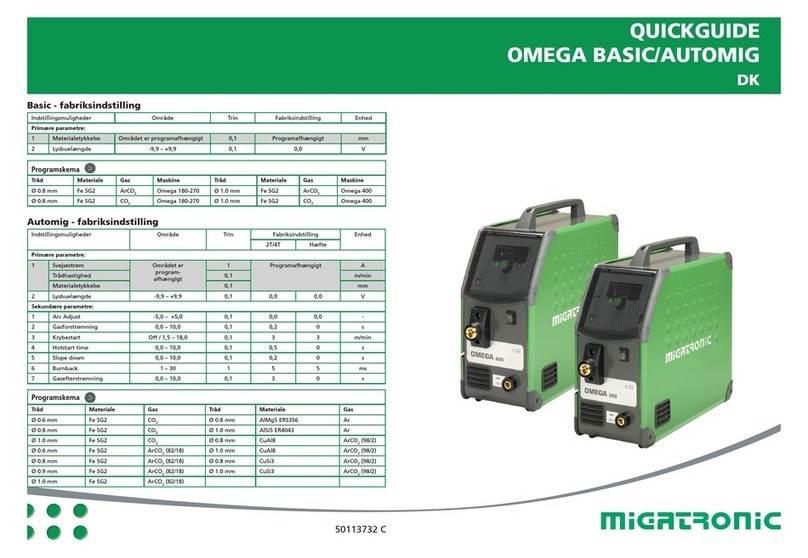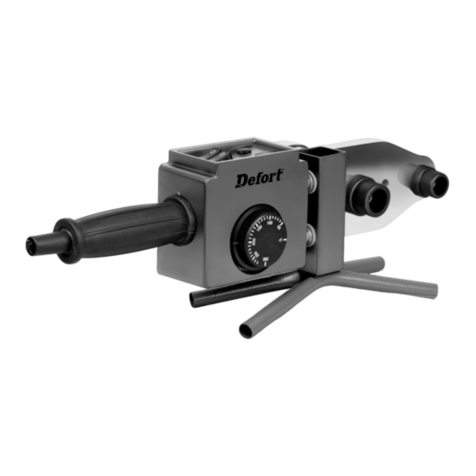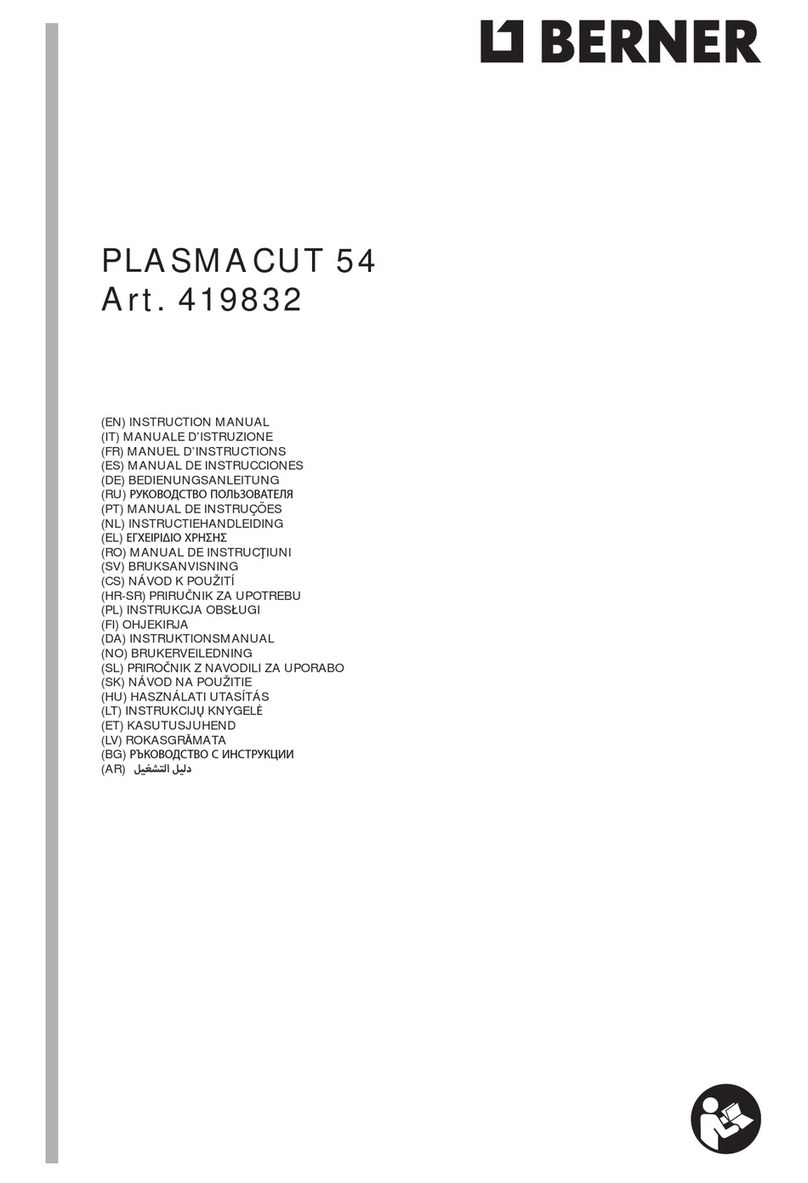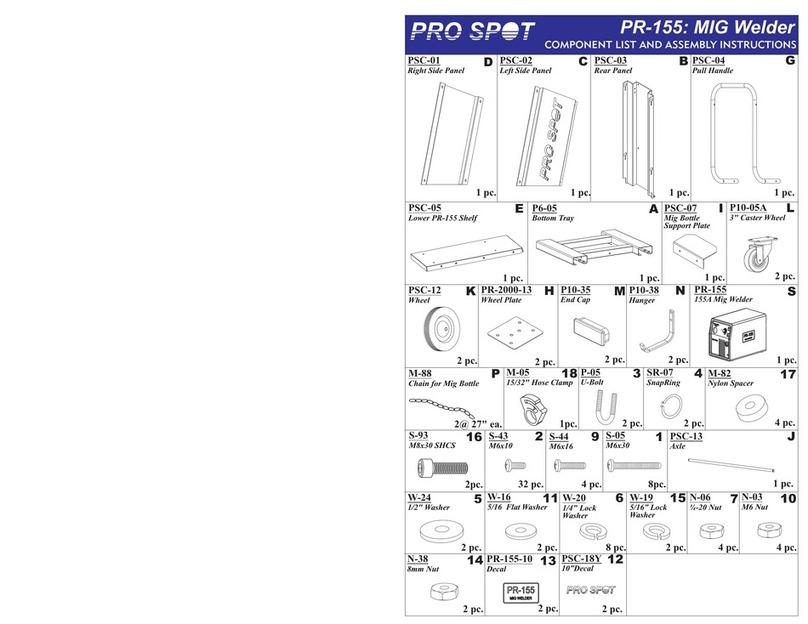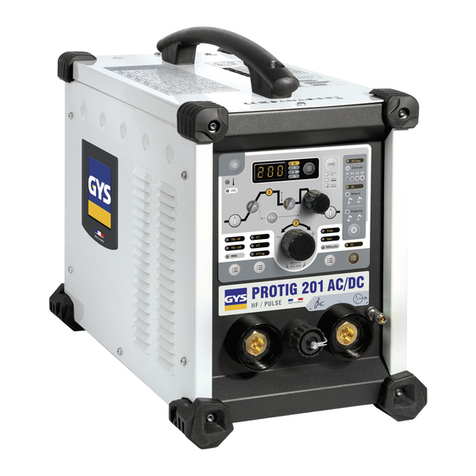D-M-E Company
29111 Stephenson Highway
Madison Heights, MI 48071
Phone:
(800) 626-6653 (248) 398-6000
Fax:
(248) 398-6174
D-M-E ProWeld™User Guide
PREFACE
Please read this instruction manual thoroughly before using
your D-M-E Pro Weld™system.
The D-M-E Pro Weld unit is a newly developed resistance-
type micro-welding machine. It is powerful enough to weld
0.3mm thick metal sheets and has a wide selection of weld-
ing materials in sheet, wire and powder form to choose from.
Applications
♦Welding can be made to steel molds and dies for plastics,
rubber, die casting, and compression molds.
♦Welds can be applied on as-rolled steel, pre-hardened
steel, quenched and tempered steel, free cutting steel,
stainless steel, and others.
♦To build up parting lines, mold seams, 3-point corners
and edges.
♦To fill in pores, repair of pinholes.
♦To repair wear, worn areas on slides, ejector pins,
sharp edge molds, and thin core parts.
♦To design modification of inserts and cores.
♦To add a radius to an inner corner due to a
design change.
♦To repair the shrinkage that occurs after argon arc
and TIG welding.
♦To repair damage due to overgrinding, from an
end mill or EDM process.

